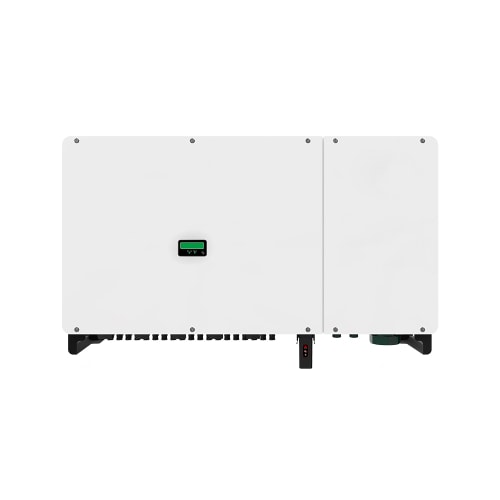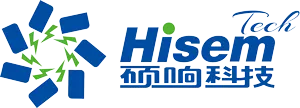NEWS
Welcome to My Blog!
Before we dive into the content, if you’re interested in our products or have any questions, please feel free to visit our Contact Us page on the website. Our team is ready to assist you with inquiries, orders, or any support you may need.
Now, let’s get started on our journey together. I hope you find the content here insightful, engaging, and valuable.
Table of Contents
Solar inverters are a crucial component of any solar energy system. As the backbone of your solar setup, they convert the DC (direct current) electricity produced by solar panels into AC (alternating current) electricity, which can then be used to power your home or business. This comprehensive guide will help you understand the different types of solar inverters, how to choose the best one for your needs, and the benefits of incorporating solar inverters into your energy system.
What is a Solar Inverter?

Definition of a Solar Inverter
A solar inverter is a device that converts the direct current (DC) electricity generated by solar panels into alternating current (AC) electricity. AC electricity is what powers most household appliances and the electrical grid, making the inverter an essential part of every solar power system.
How Solar Inverters Work
When sunlight hits the solar panels, they generate DC electricity. However, most homes and businesses operate on AC power. A solar inverter takes the DC power from the solar panels and converts it into AC power, ensuring that your solar energy can be used effectively in your electrical system.
Why You Need a Solar Inverter for Your Solar System
Without a solar inverter, your solar panels would only generate DC electricity, which cannot be used to power common household appliances. The inverter makes it possible to utilize the electricity generated by your solar energy system, providing you with energy savings and reducing your reliance on traditional electricity sources.
Types of Solar Inverters
String Inverters
What are String Inverters?
String inverters are the most commonly used type of solar inverter. They are connected to a series of solar panels (or a “string”) and convert the DC power from all the panels into AC power. They are typically installed near the main electrical panel.
Pros and Cons of String Inverters
String inverters are cost-effective and easy to install. However, they have a major drawback: if one panel in the string experiences shading or malfunction, the entire system’s performance can be affected. This makes them less ideal for installations where shading is an issue.
Microinverters
What are Microinverters?
Microinverters are small inverters installed on each individual solar panel. They convert DC power to AC power at the panel level.
Benefits of Microinverters for Residential Use
Microinverters offer significant advantages, particularly for homes with shading issues. Since each panel operates independently, shading or panel failure only affects one panel, not the entire system. They are more expensive than string inverters but provide higher energy production and efficiency, especially in complex installations.
Hybrid Inverters
Understanding Hybrid Solar Inverters
Hybrid inverters combine the functions of a traditional solar inverter and a battery inverter. They allow you to store excess energy generated by your solar system in batteries for use when the sun isn’t shining.
How Hybrid Inverters Work with Battery Storage
Hybrid inverters manage both the conversion of DC power and the charging of batteries. They allow for more control over your energy usage, making them an ideal choice for homes looking to maximize energy independence.
Central Inverters
When to Use a Central Inverter
Central inverters are typically used in large-scale commercial or industrial solar power installations. They operate similarly to string inverters but are designed to handle much larger capacities.
Advantages and Drawbacks of Central Inverters
Central inverters are more efficient for large systems, but they are also bulkier and more expensive to install. They also have the same drawback as string inverters: shading or faults in one part of the system can impact the performance of the entire array.
How to Choose the Best Solar Inverter for Your Home

Factors to Consider When Choosing a Solar Inverter
- System Size and Power Output: Ensure the inverter is appropriately sized for your solar power system. A good rule of thumb is to match the inverter capacity with your solar panels’ output.
- Efficiency Ratings: Look for inverters with high efficiency, ideally above 98%. Higher efficiency means more energy production and less waste.
- Compatibility with Solar Panels: Make sure your inverter is compatible with the type and number of solar panels you have.
Solar Inverter Brands to Consider
- Fronius: Known for high-quality, reliable solar inverters with excellent efficiency ratings.
- SolarEdge: Offers advanced power optimizers that work with string inverters, making them ideal for systems with shading issues.
- Huawei: A global leader offering cutting-edge hybrid inverters with smart technology.
- SMA: A trusted German brand with a long history in solar inverter manufacturing.
Price vs. Performance: What to Look For
When choosing an inverter, it’s important to balance cost with performance. While microinverters may offer better performance and flexibility, they come at a higher price. For homes without shading issues, string inverters are often the most economical choice.
Benefits of Using Solar Inverters
Enhancing Energy Efficiency
Solar inverters help to maximize the efficiency of your solar system by ensuring that every bit of energy generated by your solar panels is converted into usable electricity. Higher efficiency means more savings on your energy bill.
Saving Money on Electricity Bills
By converting solar energy into usable AC electricity, solar inverters enable you to use free energy from the sun, which can significantly reduce or even eliminate your electricity bills.
Environmental Benefits
Switching to solar power, with the help of solar inverters, contributes to a cleaner, greener environment. By generating your own energy, you reduce your reliance on fossil fuels and decrease your carbon footprint.
Solar Inverter Installation: A Step-by-Step Guide

Preparing for Installation
Before installing a solar inverter, you need to assess your site to ensure it’s suitable for the inverter and solar panels. Ensure you have adequate space, appropriate wiring, and that your electrical system can handle the added load.
The Installation Process
- Step 1: Mount the inverter near your electrical panel, typically indoors or in a shaded area.
- Step 2: Connect the inverter to your solar panels using the appropriate wiring.
- Step 3: Integrate the inverter with your electrical system to ensure proper AC power conversion.
Common Installation Mistakes to Avoid
- Improper Sizing: Make sure the inverter is properly sized for your system.
- Wrong Placement: Avoid placing your inverter in direct sunlight or areas prone to high temperatures.
Troubleshooting and Maintaining Your Solar Inverter
Common Solar Inverter Issues
Solar inverters are generally reliable, but they can sometimes experience problems, such as overheating, error codes, or failure to convert power. Regular maintenance and monitoring can help identify issues early.
How to Maintain Your Solar Inverter
- Routine Checkups: Inspect your inverter regularly for wear and tear.
- Cleaning: Keep the inverter and surrounding area clean to ensure proper ventilation and cooling.
What to Do When Your Solar Inverter Breaks
If your inverter stops working, first check for error codes on the display or check the manufacturer’s manual for troubleshooting steps. If problems persist, contact a professional for repairs.
Solar Inverter Costs and Return on Investment (ROI)

How Much Does a Solar Inverter Cost?
The cost of a solar inverter typically ranges from $1,000 to $3,000, depending on the type and brand. For a more complex hybrid or microinverter system, the price can be higher.
Understanding the ROI for Solar Inverters
Most solar inverters will pay for themselves within 5 to 10 years, depending on your energy savings. Over time, your inverter and solar system will continue to provide free energy, resulting in long-term savings.
Conclusion
Solar inverters are essential for maximizing the efficiency and cost savings of your solar energy system. By choosing the right inverter, you can ensure a reliable, high-performance solar system that will serve you for many years to come.
FAQ
What is the lifespan of a solar inverter?
The average lifespan of a solar inverter is 10 to 15 years. However, newer inverters, particularly hybrid models, are expected to last 20 years or more.
Can I use a solar inverter without battery storage?
Yes, you can use a solar inverter without battery storage. However, without storage, you will only be able to use energy during daylight hours.
What are the main differences between grid-tied and off-grid solar inverters?
Grid-tied inverters connect your solar system to the electrical grid, while off-grid inverters are used in systems that are not connected to the grid and require battery storage.
Are solar inverters eco-friendly?
Yes, solar inverters are eco-friendly because they enable the use of renewable solar energy, reducing dependence on fossil fuels and lowering carbon emissions.
What warranty options are available for solar inverters?
Most solar inverters come with a warranty of 5 to 10 years. Some brands, like Tesla, offer extended warranties for their hybrid inverters.
Ready to Harness the Power of Solar Energy?
If you’re considering installing a solar system, the right solar inverter is crucial to maximizing efficiency and savings. Contact us today to learn more about our high-performance solar inverters and how they can help you reduce energy costs and promote sustainability.

